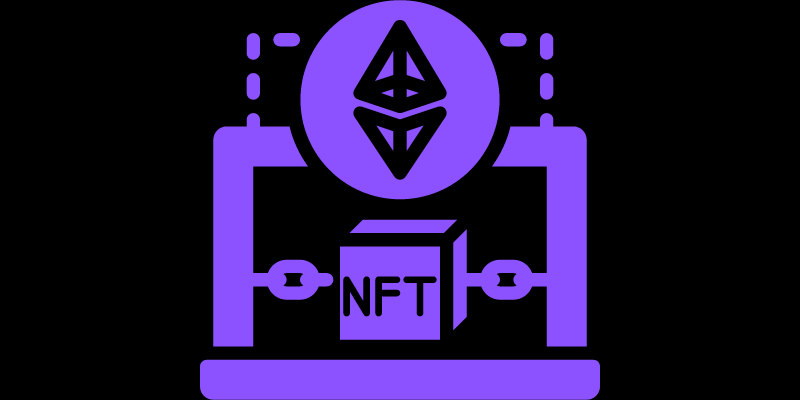In the fast-paced world of Web3 and blockchain technology, NFT (Non-Fungible Token) marketplaces have emerged as a revolutionary platform for buying, selling, and trading digital assets. With the exponential growth of NFTs, standing out in the crowded marketplace has become a challenge. This is where Cross-Channel Marketing comes into play. In this article, we will explore the significance of Cross-Channel Marketing for NFT Marketplaces, its role in driving liquidity and volume, and how ColdChain, a leading Web3 digital marketing agency, can help NFT Marketplaces thrive.
Cross-Channel Marketing has evolved from being a marketing buzzword to an essential strategy that bridges the gap between diverse marketing platforms. It involves seamlessly integrating and synchronising marketing efforts across various channels, such as social media, email, influencers, content marketing, and more. The aim is to create a consistent brand message and experience, engaging users wherever they are.
What is Cross-Channel Marketing in relation to NFT Marketplaces?

Cross-Channel Marketing refers to the practice of using multiple marketing channels to create a unified and integrated customer experience. Rather than focusing on a single channel, this approach recognises that users interact with brands through multiple touchpoints, both online and offline.
In the context of NFT marketplaces, Cross-Channel Marketing involves leveraging a combination of platforms to reach potential NFT collectors, artists, and investors. This could mean promoting NFT drops through social media, collaborating with influencers to reach niche audiences, sending personalised email campaigns, and using content marketing to educate and engage users.
Why is Cross-Channel Marketing important for NFT Marketplaces?

NFT Marketplaces thrive on liquidity and volume. Liquidity is the ability to quickly buy or sell assets without significantly affecting their price, and volume refers to the number of transactions taking place. Cross-Channel Marketing creates a multiplier effect, where reaching users through multiple touchpoints increases brand visibility, user engagement, and ultimately, transactional activity.
Cross-channel marketing is essential for NFT (Non-Fungible Token) marketplaces to drive more liquidity and volume for several reasons:
Wider Audience Reach:
Cross-channel marketing allows NFT marketplaces to reach potential users across various platforms and channels, such as social media, email, websites, and apps. This broadens the marketplace’s exposure and helps attract a more diverse audience, including collectors, investors, and enthusiasts.
Increased Project Awareness:
NFT marketplaces can generate higher awareness about their offerings by promoting their platform through various channels. This increased exposure helps educate potential users about the benefits of NFTs, the marketplace’s unique features, and the value of participating in the ecosystem.
Diversification of Traffic:
Relying solely on one channel for marketing can be risky. Changes in algorithms, policies, or user behavior can negatively impact a single-channel strategy. Cross-channel marketing mitigates this risk by spreading the marketplace’s visibility across multiple platforms.
Diverse User Behaviour:
Different users prefer different communication channels and platforms. Some might be active on social media, while others might prefer email newsletters or dedicated NFT forums. By utilising multiple channels, NFT marketplaces can effectively engage users based on their preferred communication methods.
Consistent Messaging:
Cross-channel marketing allows NFT marketplaces to maintain consistent messaging across all platforms. This consistent branding and messaging help establish a strong identity in the minds of potential users, making it easier for them to recognise and trust the marketplace.
Retargeting and Remarketing:
Cross-channel marketing enables retargeting and remarketing efforts. For example, users who visited the marketplace’s website but didn’t make a purchase could be retargeted with ads on social media or display networks, reminding them to complete their transaction.
Tasks involved in creating a Cross-Channel Marketing plan for NFT Marketplaces

Creating a cross-channel marketing plan for NFT (Non-Fungible Token) marketplaces involves a combination of strategies and tactics across various marketing channels to effectively promote and grow the marketplace. Here’s a comprehensive outline of tasks involved in creating such a plan:
Market Research and Audience Segmentation:
- Research the NFT market landscape, including competitors, trends, and user behaviors.
- Identify your target audience, including collectors, artists, investors, and enthusiasts.
- Segment your audience based on demographics, interests, behavior, and preferences.
Goal Setting:
- Define clear and measurable goals for the marketing plan.
- This could include targets such as increasing platform users, boosting NFT sales, enhancing brand awareness, or improving user engagement.
Channel Selection:
- Choose a mix of marketing channels that align with your target audience and goals.
- This could include social media, email marketing, influencer partnerships, content marketing, events, and more.
Content Strategy:
- Develop a content strategy that caters to each channel and audience segment.
- Create compelling content such as educational articles, artist spotlights, user success stories, and behind-the-scenes content related to NFT creation.
Execution of the cross-channel marketing plan:
Once the above is complete, you will want to look at the execution of the plan which may include targeted campaigns including Email Marketing, Influencer and Partnerships, Content Marketing, and Paid Advertising and more.
Remember, the effectiveness of your cross-channel marketing plan will depend on your ability to adapt to the rapidly evolving NFT landscape and engage with your target audience in meaningful ways.
*Remember – Regularly analyse data to measure the effectiveness of each channel and make data-driven adjustments.
Challenges in executing a Cross-Channel Marketing strategy for NFT Marketplaces

Creating and executing a Cross-Channel Marketing strategy for NFT (Non-Fungible Token) marketplaces presents several unique challenges due to the nascent and rapidly evolving nature of the NFT market. NFTs are digital assets that represent ownership or proof of authenticity of a unique item using blockchain technology. Here are some challenges you might encounter:
Educational Barrier:
The concept of NFTs is still relatively new and unfamiliar to a majority of the general population. Educating your target audience about what NFTs are, how they work, and the benefits will be a crucial part of your strategy.
Market Saturation:
The NFT market has witnessed explosive growth, leading to a flood of new projects and marketplaces. Standing out in a crowded space and differentiating your marketplace from others is a significant challenge.
Community Building:
NFT communities are often very engaged and can significantly impact the success of a project. Building and nurturing a community around your marketplace requires time and effort. Marketing support can elevate this.
Target Audiences:
The NFT space attracts a diverse audience, ranging from art enthusiasts to gamers, collectors, investors, and technophiles. Tailoring your marketing messages to resonate with such a varied audience can be challenging.
Regulations:
Depending on your jurisdiction and Country, there might be significant regulatory uncertainties surrounding NFTs. This can impact your marketing strategy, especially when targeting a global audience.
Articulating Value:
Clearly articulating why someone should buy an NFT, especially at potentially high prices, is essential. This involves showcasing the unique benefits and experiences that owning an NFT can provide.
To address these challenges, it’s important to have a well-researched and flexible marketing plan that takes into account the unique characteristics of the NFT market. This plan should involve a combination of education, engagement, community-building, and a focus on the value proposition of your NFT marketplace. Regularly monitoring trends and adapting your strategy accordingly will also be crucial in this rapidly changing landscape.
ColdChain can work with you on a competitive Cross-Channel Marketing plan

Reach out to ColdChain today, and let’s work together to create a Cross-Channel Marketing strategy for your NFT Marketplace.
Complete the form below to get started!
Our Final Thoughts
In the ever-evolving landscape of NFT Marketplaces, staying ahead requires strategic innovation. Cross-Channel Marketing serves as a powerful tool to drive liquidity and volume by expanding brand reach and engaging users across platforms. With ColdChain’s expertise, NFT Marketplaces can harness the potential of Cross-Channel Marketing and position themselves for success in the Web3 era. Contact us today and let’s drive your NFT Marketplace towards greater liquidity and volume together.
Cross-Channel Marketing as part of a holistic Web3 digital marketing plan

While Cross-Channel Marketing is a potent strategy, it’s just one piece of the puzzle. NFT Marketplaces should consider a comprehensive Web3 digital marketing plan that includes other services such as community management, tokenomics consulting, and analytics optimisation. ColdChain offers a complete suite of services to address the diverse needs of Web3 projects.
ColdChain can partner with you on a range of digital marketing services, including:
- Web3 Marketing Launchpad: End-to-end Marketing Launchpad for Web3 Projects & Ecosystems.
- Strategy Development: Implement a Bespoke Digital Marketing Strategy for your Web3, Blockchain, Crypto or NFT Project.
- Search Engine Optimisation (SEO): Enhancing online visibility and organic traffic through SEO best practices.
- Social Media Marketing: Leveraging the power of social media platforms to engage with the audience and build brand awareness.
- Fractional CMO: Immediate Marketing Impact With Our Fractional Teams Built Around Your Needs.
- Email Marketing: Creating personalised email campaigns to nurture leads and retain customers.
- Web3 Analytics & Attribution: Utilising data analytics to track performance and make data-driven decisions.



